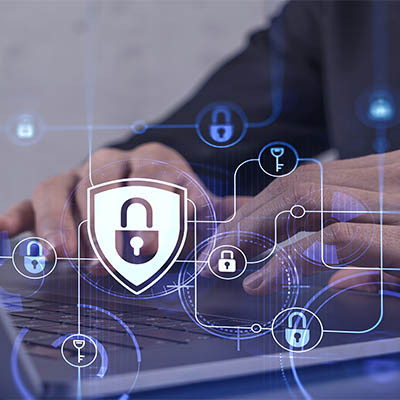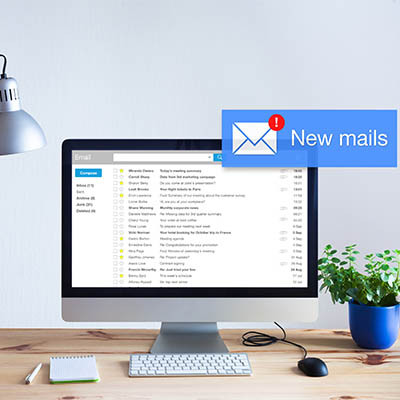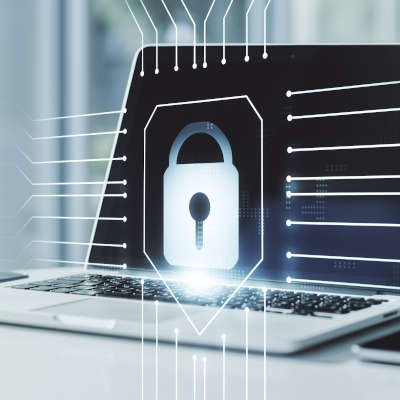Real cybersecurity preparedness is, like most things in a business, a team effort. Everyone needs to be aware of the best practices involved in cybersecurity. Naturally, this will involve training. In the interest of making sure this training is as effective as it needs to be, we’ve assembled a few best practices to keep in mind as you design a curriculum.
Advanced Computers Blog
Many small businesses that provide goods or services have a Point of Sale, or POS, as the primary workstation. As such, many of the business’ core processes run through it. These systems have a plethora of great features that are built right into them, and if you fail to take advantage of them, you could be wasting valuable time and resources.
Unfortunately, technology does not last forever, and today’s culture of upgrades means that users of smartphones and other devices are constantly updating even when they don’t need to. This practice can extend to businesses, too. Businesses need to have a strategy in place that they can use when it is time to upgrade from older devices, including the way that you dispose of them. Here is how you can effectively dispose of your older connected devices without sacrificing the environment and your data privacy/security.
As you read this sentence, think about the current state of your email inbox. Is it clean and crisp with only a handful of new emails on a daily basis, or is it an entangled mess filled with hundreds (or even thousands) of unread and often unimportant emails? If it’s the latter, you’re in luck; we’ve got some tips to help you finally get a grip on your email inbox.
Regardless of how well a new device or gadget works when it is first acquired, they certainly don’t last forever. Eventually, the time comes that your old technology needs to be replaced, leaving you to dispose of it. This requires more than just a quick trip to the dumpster, however. These devices need to be properly recycled, as many contain hazardous materials.
The most successful businesses are those that are always seeking to improve what they offer—oftentimes, taking a successful element and simply making it more efficient to deliver. In the past, this basically meant that businesses needed to have their employees work more quickly. However, today’s improved technology and the automation that it makes possible have delivered a much more consistent option.
For any business endeavor, productivity has to be at the very top of the hierarchy of metrics. Think about it, it doesn’t matter what field you work in or what market you cater to, if your business isn’t productive it is going to have a hard time being profitable. For almost a year, many businesses have relied on remote workers due to the COVID-19 pandemic, and regardless of what you think about remote work, metrics have shown a fairly surprising rate of productivity out of remote workers over this time. With 12 months of data in hand, we take a look at why productivity is still a king of metrics and how the ongoing pandemic has affected the workforce’s productivity.
As the preeminent form of security online, passwords are currently the most important frontline defense to get right in your organization. However, many people often cut corners with their passwords to ensure they don’t forget them, recycling them across their many accounts. Let’s go over a few ways to help your team create secure passwords that they can commit to memory without shortchanging their efficacy.
“Doing things the old-fashioned way” isn’t often how a managed service provider will operate, but in some respects, this really is the best course to take with your IT, at least in terms of strategy. Let’s consider some principles and best practices that have largely remained the same even as time has changed.
We talk a lot—a lot—about “best practices” regarding IT and technology. However, it has come to our attention that not a lot of people necessarily know what this means, especially when it comes from an MSP. We wanted to take a few moments and go over what best practices are, and why it is important that they have a presence in your business’ IT.
We will often keep an eye on current events to find practical examples to use as evidence in support of our recommended best practices, but a relatively recent Spotify hack has given us a special opportunity. We now have the opportunity to use this one story to reinforce not one, but two such practices. Let’s dive in, shall we?
One of the most valuable things for a business to know, in terms of its cybersecurity, is how vulnerable it is to breaches and exploits. This kind of information can be gathered via a process called penetration testing, or “pen testing.” Let’s go over how the average pen test is conducted to see how these insights are collected.
With the pandemic stretching on for so long, there are a lot of workplaces figuring out ways to reopen and resume operations. Due to today’s technology providing the option for some, many managers and business owners have elected to keep the office shut down and shift to remote operations. Technology is also assisting those who are going back into the workplace. Let’s examine some of the technology that is being used to accomplish workplace processes, in all the different ways it can.
When a business gets hacked or loses data, it can turn out to be a problem that won’t go away. If your business is seeking to get the security it needs to protect the welfare of your employees, your clients, and your substantial investment, you have to start to look at the bigger picture. The security of your business happens at three levels and you need a plan for each. Today, we’ll take a look at these three levels.
As a greater proportion of the workforce is spending time at home working remotely, it is important to keep security even more in mind than usual. Not only are people apt to be online more, they will also be outside of the protections that your business provides. This gives scammers an opportunity to embrace.
Whether you’re referring to ransomware, phishing, data theft, spoofing, any of the many forms of cybercrime, it is something that all businesses need to prepare themselves for. While different business sizes will have differing scales to contend with, these kinds of preparations will involve the same basic principles. To help you best defend your company against cybercrime, here are a few tips based on those principles.
While there are plenty of ways that a business can cut costs in the long term, one very effective way that this can be accomplished is by adopting more paperless solutions and printing less. As an added bonus, these solutions are also better for the environment as a whole, as they reduce the amount of resources being expended to do business. Let’s go over a few ways that you could cut back on your business’ paper expenditures over time.
We often think of technology as something that is meant to help us, all without doing anything for it in return. The problem with this mindset is that you need to take care of your technology if you want it to keep your business ahead of the game. We’ll go over some technology maintenance tips to ensure that you know how to take care of your business technology--primarily your office workstations.
When you mention the term 'disaster recovery,' most people think about the big ground-shattering events like earthquakes, fires, floods, tropical storms, etc. While these natural events are certainly disasters and devastating in their own right, smaller things can constitute as a disaster for your business, and they aren't seasonal.




















